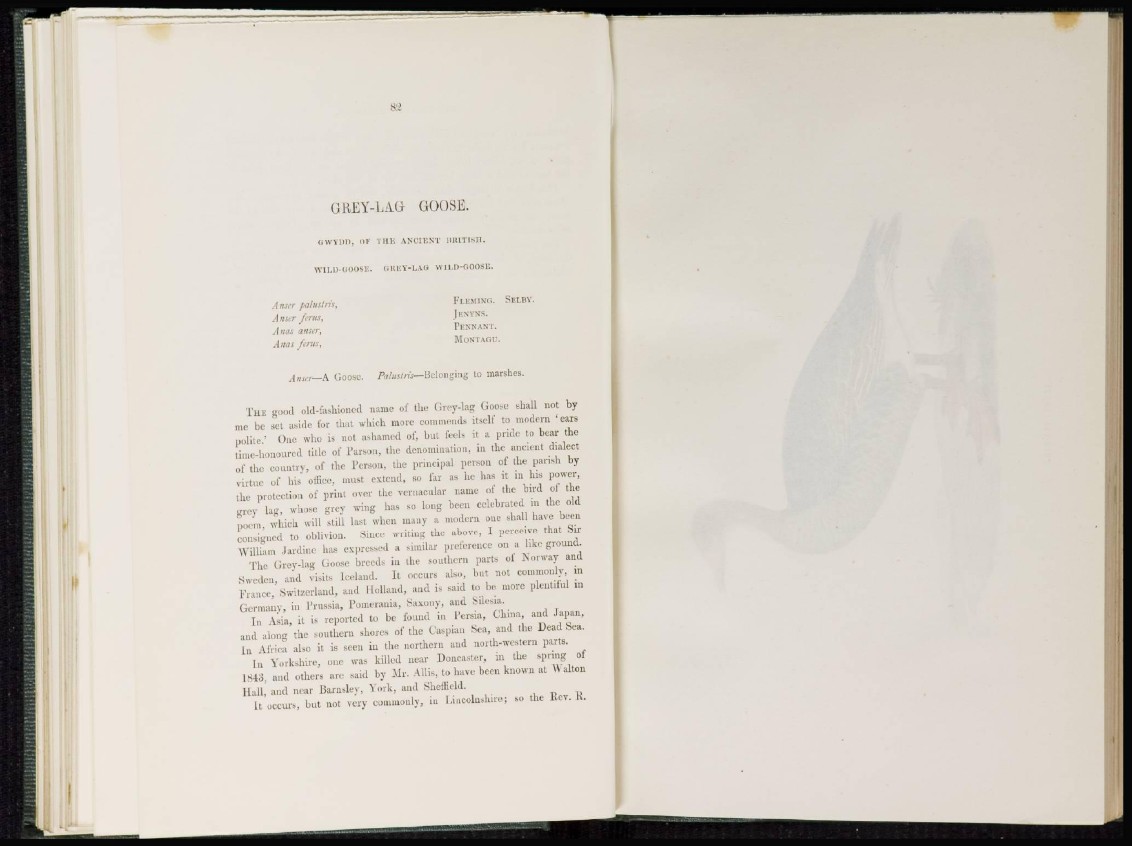
GREY-LAG GOOSE.
GWYUI). (IF rllli ANCIENT BBITISB.
WILD-GOOSE. GREY-LAG WILD-GOOSE.
A. nser palu. str. is•, FL LEMING. SFLBY.
Ansa- finis, JFNYNS.
Anas anur, PENNANT.
Ana, firm, MONTAGU.
Anser -A Goose. Pa/us/ris—Belonging to marshes.
T H E good old-fashioned name of the Grey-lag Goose shall not by
me be set aside for that which more commends itself to modern 'ears
polite.' One who is not ashamed of, but feels it a pride to bear the
time-honoured title of Parson, the denomination, in the ancient dialect
of the country, of the Person, the principal person of the parish by
virtue of his office, must extend, so far as he has it in his power,
the protection of print over the vernacular name of the bird of the
grey lag, whose grey wing has so long been celebrated in the old
poem, which will still last when many a modern one shall have been
consigned to oblivion. Since writing the above, I perceive that Sir
William Jardine has expressed a similar preference on a like ground.
The Grey-lag Goose breeds in the southern parts of Norway and
Sweden, and visits Iceland. It occurs also, but not commonly, in
France, Switzerland, and Holland, and is said to be more plentiful in
Germany, in Prussia, Pomerania, Saxony, and Silesia.
Iu Asia, it is reported to be found in Persia, China, and Japan,
and along the southern shores of the Caspian Sea, and the Dead Sea.
In Africa also it is seen in the northern and north-western parts.
I n Yorkshire, one was killed near Doncaster, in the spring of
1843, and others are said by Mr. Allis, to have been known at Walton
Hall, and near IJarnslev, York, and Sheffield.
I t occurs, but not very commonly, in Lincolnshire; so the Kev. K.